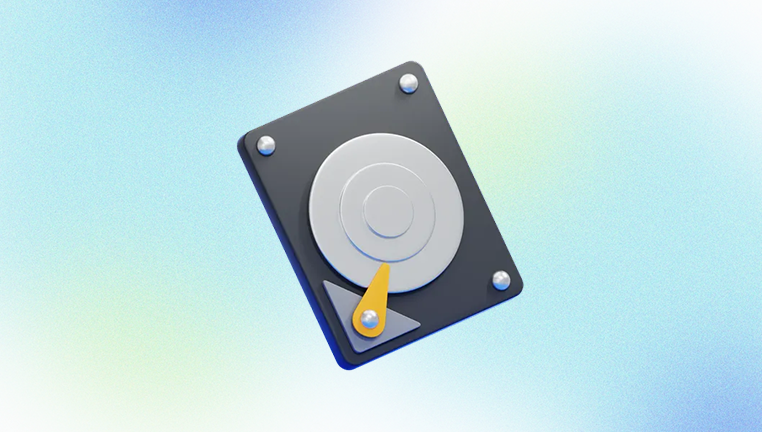Hard drive failure is one of the most dreaded events in the digital world. It threatens personal memories, business documents, multimedia collections, and sensitive data. Whether you're a casual user or a professional, dealing with a failed hard drive can feel overwhelming. However, data recovery is possible, and with the right tools and methods, many users can successfully retrieve their lost files.
Chapter 1: Hard Drive Failure
A hard drive failure occurs when the device can no longer read, write, or store data as intended. These failures fall into two primary categories:
Logical Failure: This includes corrupted file systems, accidental formatting, deleted partitions, or malware attacks. The hardware is intact, but the data structure is damaged.

Physical Failure: Physical issues involve mechanical or electronic component failures—such as damaged platters, broken read/write heads, or faulty circuit boards.
Common Causes:
Power surges or outages
Overheating
Mechanical wear and tear
Physical impact
Manufacturing defects
Virus/malware infection
Chapter 2: Recognizing Signs of Hard Drive Failure
Early detection can make data recovery more successful. Watch for these signs:
Clicking or grinding noises
Unrecognized drive by the BIOS
Slow system performance
Frequent crashes or freezing
Disappearing files or folders
Error messages related to disk reading
Chapter 3: Immediate Actions to Take
Stop Using the Drive: Continued use can overwrite lost data or worsen damage.
Disconnect Safely: Remove the drive and connect it to another system as a secondary drive.
Avoid DIY Repairs: Opening a hard drive outside a cleanroom can make recovery impossible.
Back Up What You Can: If accessible, back up files before attempting recovery.
Chapter 4: Diagnosing the Failure Type
Logical Failures:
Use BIOS/UEFI to check if the drive is detected.
Run disk management tools to see partition visibility.
Use S.M.A.R.T. monitoring tools (e.g., CrystalDiskInfo) to assess drive health.
Physical Failures:
Drive not spinning up
Unusual noises
Burnt smell or visible damage
Not recognized even with external enclosures
Chapter 5: Data Recovery from Logical Failures
Step-by-Step Guide:
Connect the Drive: Use SATA-to-USB adapter or install internally.
Select Recovery Software:
Drecov Data Recovery
Drecov Data Recovery is a powerful yet accessible tool designed to help users retrieve lost, deleted, or inaccessible data from a wide range of storage devices. Whether you’ve accidentally deleted files, formatted a drive, or encountered a logical disk failure, Drecov Data Recovery provides a professional-grade solution for restoring your critical information.
What sets Panda apart is its intuitive interface, making it suitable for both beginners and advanced users. The software supports various file systems including NTFS, FAT32. exFAT, and HFS+, allowing recovery from hard drives, USB sticks, SD cards, and external storage devices. Users can choose between Quick Scan for fast retrieval and Deep Scan for more thorough recovery, ensuring flexibility based on data loss scenarios.
Run a Deep Scan: Let the software analyze lost or inaccessible files.
Preview and Recover Files: Choose files to recover and save them to another drive.
Tips:
Recover important files first.
Avoid recovering to the same drive.
Chapter 6: Data Recovery from Physical Failures
Physical failures often need expert intervention. However, in minor cases:
Check Circuit Board: Replace PCB from identical model with matching firmware.
Freezer Trick (Last Resort): Freezing may shrink components and allow temporary access.
Professional Help: Use cleanroom recovery services for internal component damage.
Cleanroom Recovery Labs Offer:
Dust-free environment
Platter and head repairs
Component transplantation
Expected Costs:
$300 to $2500+ depending on complexity and data size
Chapter 7: Using Drecov Data Recovery Software
Drecov Data Recovery is a robust tool designed for recovering data from logically failed hard drives.
Features:
Supports NTFS, FAT32. exFAT, and HFS+
Quick and Deep Scan modes
File preview and selective recovery
Partition recovery
Disk imaging tools
How to Use:
Download and install Drecov Data Recovery on a working system.
Connect the failed drive externally.
Choose the target drive and scanning method.
Let the scan complete and preview recoverable files.
Save recovered files to a safe location.
Chapter 8: Data Recovery on Windows, macOS, and Linux
Windows:
Use GUI-based tools like Panda, EaseUS, and Stellar.
macOS:
Use Disk Drill, Data Rescue, or Panda if compatible.
Mount drive in read-only mode before recovery.
Linux:
Use open-source tools like TestDisk, PhotoRec, or ddrescue.
Use terminal commands for mounting and imaging.
Chapter 9: Creating Disk Images Before Recovery
Disk imaging protects your original data from further harm.
Tools:
Clonezilla
ddrescue
Acronis True Image
Steps:
Clone drive to another storage medium.
Work on the image instead of the physical drive.
Use recovery tools on the image.
Chapter 10: When to Seek Professional Recovery Services
Professional labs should be consulted when:
The drive makes clicking or grinding noises
It’s not detected at all
You need data urgently and safely
There is evidence of physical damage
Reputable Providers:
DriveSavers
Secure Data Recovery
Ontrack
Choosing a Provider:
Check certifications and cleanroom facilities
Get a diagnostic evaluation first
Compare costs and success rates
Chapter 11: How to Prevent Hard Drive Failure
Best Practices:
Regular Backups: Use 3-2-1 rule (3 copies, 2 types of media, 1 offsite).
Avoid Shocks: Don’t move drives while operating.
Power Protection: Use surge protectors and UPS.
Monitor Health: Use S.M.A.R.T. tools for early detection.
Proper Shutdowns: Never force power-offs.
Temperature Control: Keep drives cool and ventilated.
Hard drive failure doesn’t always mean total data loss. By identifying the type of failure and using the right recovery method—be it software like Drecov Data Recovery or professional services—you stand a strong chance of retrieving your valuable files. Prevention through regular backups and drive maintenance remains your best defense. Stay prepared, stay protected, and remember that even in failure, recovery is often possible with the right knowledge and tools.




